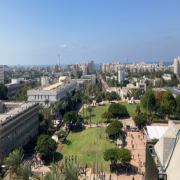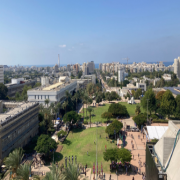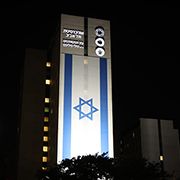A flight into the unknown
Terminal 3 and a quarter, first class ticket on the wings of imagination. Our researchers are taking off!
Summer is here and suddenly everyone seemed to be packing suitcases and going on vacations across oceans and seas. But what if there was an airplane with another class? Economy, business, first class, and a research class. And what if a ticket to this special seating class would allow our researchers to reach any place they could desire to go in their minds, regardless of time, place or even the size of their bodies?
Our researchers tend to dream big, even huge dreams. Fortunately, we all have their dreams in common: better medicine for all of humanity, advancements in science and all fields of knowledge and culture. Finding remedies for disease, protecting the environment, developing breakthrough technologies, learning about the past of mankind and trying to improve the future.
This is exactly the time to give our researchers a moment of respite and make one of their wildest fantasies come true – if not in reality, then at least in the imagination. We asked them a simple question: If you could move through time, distance or even scale (shrink or grow to any size), to find the discovery that interests you most or to prove a scientific hypothesis, where would you go, who would you meet? Buckle your seatbelts, you’re your engines, our flight is about to take off!
Prof. Colin Price, Exact Sciences (Department of Geophysics)

"I would like to travel 50 years into the future and sit on a satellite orbiting the earth to see if weather patterns have changed significantly as a result of the rise in greenhouse gases in the atmosphere. Have we managed to move from a fossil fuel economy to renewable energy economies? Or will I see that the world has been dramatically warmed, with the melting of glaciers, coastal cities flooded by rising sea levels, an increase in extreme weather events, massive immigration and global conflicts as a result of global warming?”
Dr. Renana Bartal, Arts (Department of Art History)

If I could journey back in time, I would go to one of the monasteries in the Middle Ages that had a “scripotorium”, a workshop for the production of manuscripts. The process of producing manuscripts in the Middle Ages was complex and could take several years. The monks were involved in every stage of production, from creating the manuscript’s pages, made of animal skin, the writing, the design of the book and the content of each page, the illustration and the cover.
It’s possible that one person was in charge of managing the entire project, sometimes it was the writer, but sometimes, if it was a manuscript with a complex decorative scheme, the illustrator could also be in charge. Since craftsmen rarely left their names on the pages, it’s not easy to find out who was responsible for what in the production of a medieval book.
Scholars of medieval manuscripts rely on careful observation of the details of the style of writing and illustration, and even the way the book binding and the platform on which it was written were used, to find out when and where the book was produced. I would be happy to go back and be fly on the wall in one of these workshops, to discover how the most complex manuscripts were created, who was in charge of the job, when and how women participated in it, how everyone worked together, how many hours they spent, and what their working conditions were like.”
Dr. Guy Stiebel, Humanities (Department of Archeology and Ancient Near Eastern Cultures)
"Our past is built like a mosaic or fabric of so many junctions or crucial points that changed the course of history, so there are almost innumerable points where I would be interested in being a “fly on the wall.” On the exterior wall of the Roman Senate building March 15, 44 BCE, as preparation for the assassination of Julius Caesar was going in; Near the Alps when Spartacus decided to give up his freedom and return in the direction of Rome; on the ship of Marcus Antonius in the Battle of Actium, a moment before his decision to withdraw in the trial of Socrates; or at Archimedes' house in Syracuse when the Romans entered the city; With Alexander the Great in the Battle of Guagamela or with Pliny the Elder in 79 CE, when Mount Vesuvius erupted in southern Italy, and more and more.”
"On a personal note, as someone who studies Masada, I would be curious to go back to the days before the Passover Seder of 73 BCE, to see whether the way we are reconstructing the community of rebels at Masada and understanding the course of events there matches what actually happened.”
Dr. Liad Mudrik, Neuroscience

"
So, we've visited a manuscript workshop in the Middle Ages, jumped 50 years into the future to see how global warming affected the planet, and even went on an organized group trip into the depths of the human brain. We hope you had a pleasant flight!





